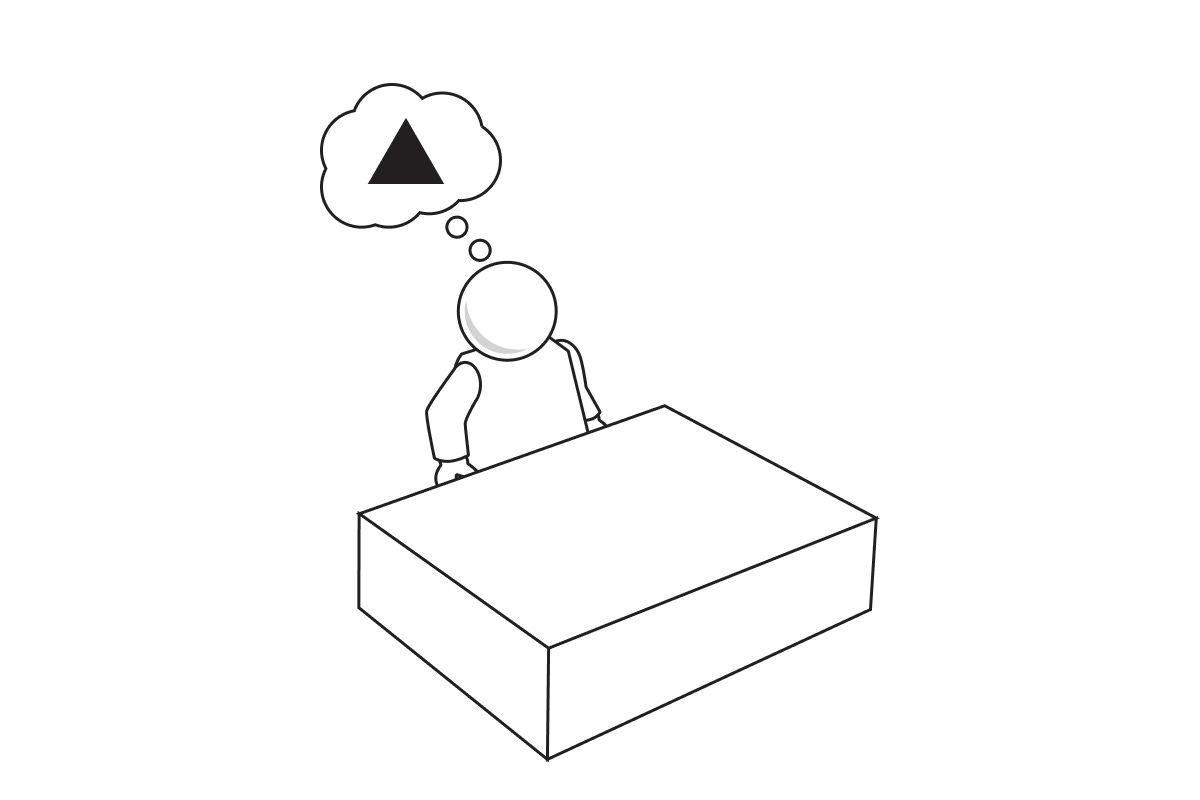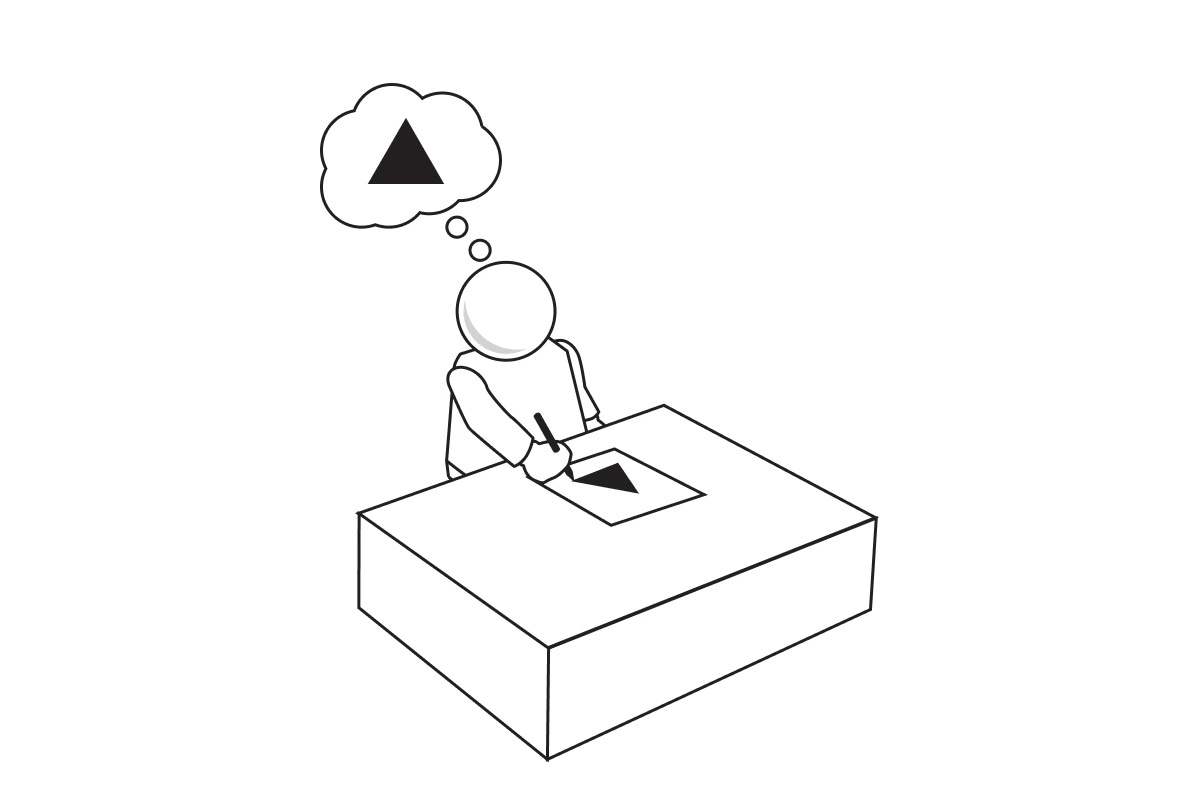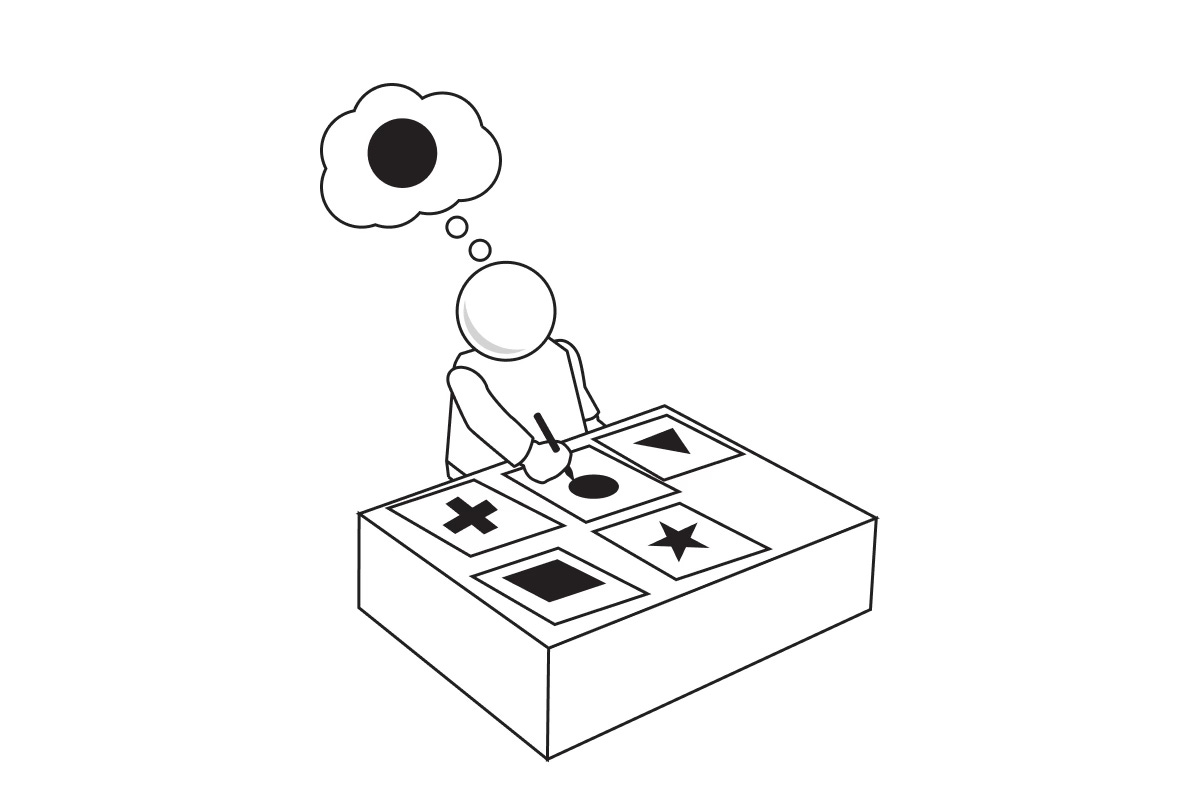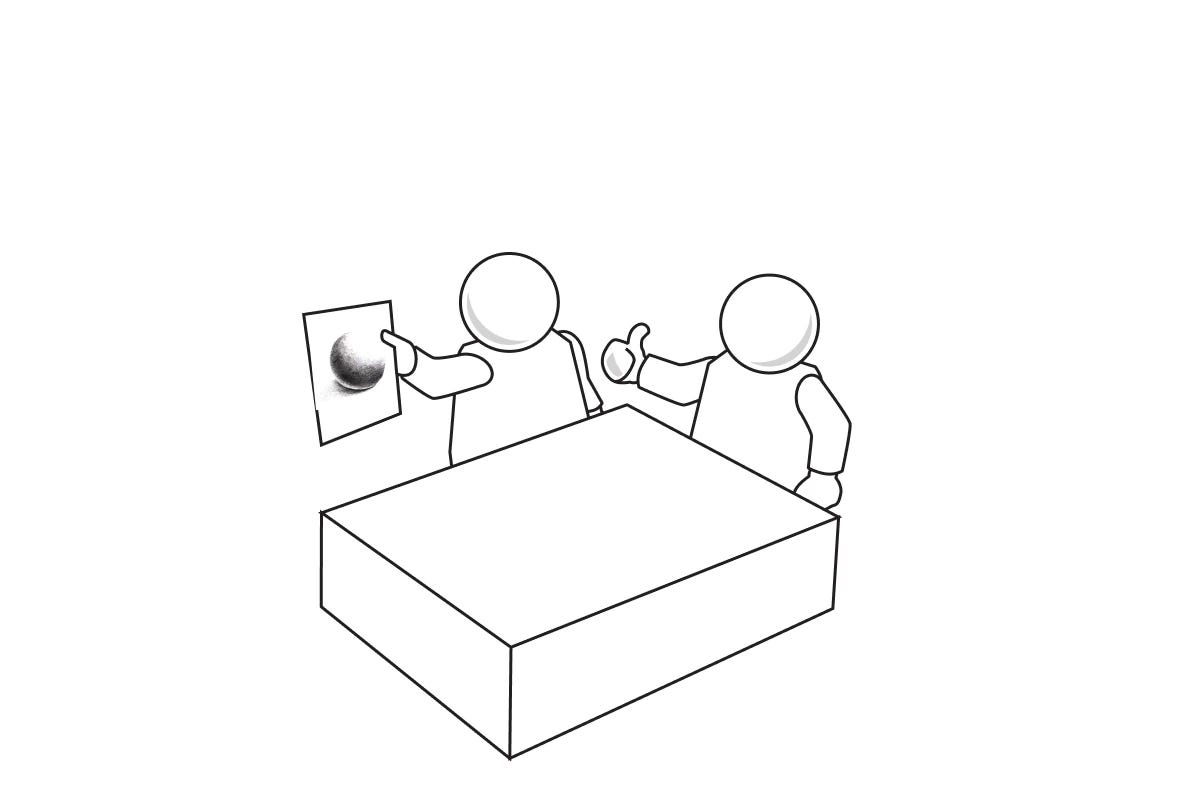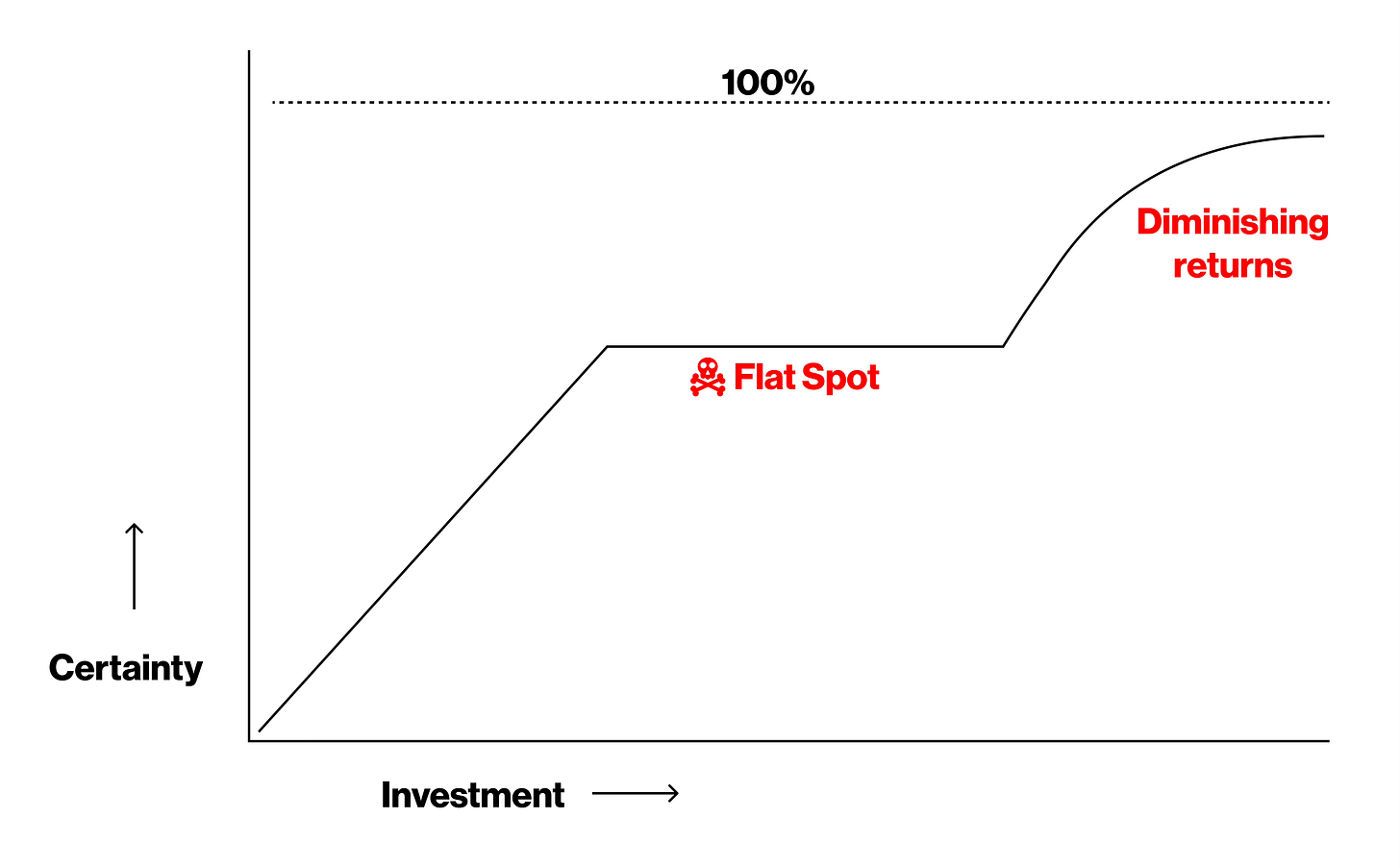Get that idea out of your head
Understand your own ideas, share them with others, and allow others to help you make your ideas real.
Pro·to·type
a first, typical or preliminary model of something, especially a machine, from which other forms are developed or copied.
Start with a conceptual prototype
Get that idea out of your head.
It’s not doing anyone any good trapped in there, so grab some paper and a marker and draw it.
When you do that, you are making a conceptual prototype of your idea–the first, tangible, preliminary version of your idea. This often changes what you think of your idea. Now you can see it from a different perspective and that can inspire new connected ideas. Now draw those.
Did you try to share your idea before you had made these drawings? It’s likely that whomever you shared it with didn’t quite understand what was in your mind. It’s easy to miscommunicate when you only have words and hand waving to describe an idea.
After you draw an idea, it’s easier to get on the same page. Now you have someone else who can help.
Because you’ve drawn the idea, she can start to understand it. That means she can help you refine the idea and how you describe it. Your partner can build on your idea and help you see it from more than one perspective. She can also help you come up with new, related ideas.
Now you have a lot of ideas captured in the form of rough conceptual prototypes. These early versions are likely still basic sketches—just enough to help you and others understand the idea. However, these rough prototypes are also likely to raise as many questions as answers. Now it’s time to take the next step.
Increasing fidelity
To continue making your ideas real, you need to move beyond simple sketches and increase the fidelity of your prototypes. Fidelity refers to how detailed or realistic a prototype is—how well it represents the final idea. By adding more detail and depth, your prototypes will become easier for you and others to fully understand and evaluate. Since it’s unlikely you’ll be able to invest in developing every prototype, you’ll need to narrow your focus to the most promising ones. Choosing where to focus isn’t always easy, but having an abundance of ideas is a great problem to have.
Here are two ways you can increase the fidelity of your conceptual prototypes:
Think through time
Most ideas are experienced or encountered over time. Tell a story about what happens at the beginning, middle and end of experiencing your idea.
Break it up
Most ideas are made up of small ideas. Figure out what the smaller components of your idea are and describe each of those.
Adding detail to your ideas helps you increase the fidelity of your conceptual prototypes. This should make it easier to develop a point of view on which ideas to put to the side, and which ones to pursue.
Other types of prototypes
There’s a limit to how much a conceptual prototype can help you move an idea forward. You will need to expand to other types of prototypes to get a more realistic view of their potential.
Behavioral Prototypes
Behavioral prototypes help you learn if you are solving a relevant problem and if your end users are able to access that value. A behavioral prototype allows people to interact with your idea, giving potential users a tangible sense of how it works and the value it offers. It could take the form of a paper prototype of a software user interface that someone can “click” with their finger while you move new “screens” into place. Or a 3D model of a physical product that someone can pick up, or even a mock-up of a space or environment that someone can walk through. You might be surprised by how people engage with your prototype—those insights can guide the development of your idea and shape future iterations.
Looks Like Prototypes
Looks like prototypes help you learn what people think of the physical appearance of an idea. These are visual representations that suggest what a solution should look like. These prototypes may not function, but they help others envision the final appearance. They have a more realistic appearance like colors and textures applied to images of software, or the final finishes and trim of a 3D product.
Works Like Prototypes
Works like prototypes help you learn if your idea is feasible from a technical perspective. These prototypes focus on how a system would work without concern for appearance. It may have wires poking out, components that don’t fit inside of its housing… but it demonstrates the technical feasibility of a concept.
Investing in prototypes
Prototyping is a form of investment. When you invest in prototypes, you’re aiming for a return: greater certainty. You want to determine, with growing confidence, whether your idea is on the right track—or, just as importantly, on the wrong one. Each prototype should refine your understanding of the idea, how it aligns with your goals, and how well it solves the problem at hand. This investment is crucial because it’s easy to overestimate the certainty provided by an early, low-fidelity conceptual prototype. To increase certainty, you need to move toward higher-fidelity prototypes that are more detailed and realistic.
For each investment of time and money in your prototype, you hope for a corresponding payoff in increasing certainty. In a perfect world, this process would move you quickly from zero to 100% certainty. Unfortunately, it rarely works that way.
Watch for flat spots
It’s easier than ever to create high-fidelity prototypes quickly, but some experiences remain difficult to prototype. For instance, when increasing a prototype’s fidelity depends on hard-to-access data, complex 3D components, or external collaboration, substantial effort may be required to create a realistic version of your idea. This can lead to “flat spots” in the investment profile, where significant time or resources yield minimal returns in learning or certainty. In these situations, ask yourself: is there a simpler way to prototype your experience without this level of effort?
Diminishing returns
Absolute certainty is a theoretical goal—you’ll never achieve 100% certainty that your idea is the perfect one. No matter how great it seems, there’s always room for it to fit the context a little better. However, endlessly refining and tweaking an idea can blind you to other possibilities—new ideas that might address the context even more effectively. Remember to pause occasionally, step back from your prototype, and take another look at the bigger picture. What’s changed in the landscape? Are you still solving the right problem?
The allure of fidelity
High-fidelity prototypes can have their downsides. When something looks real, it looks done. When it looks done it can be hard to see alternatives. This is how starting with very high-fidelity prototypes can quickly narrow your exploration to a limited range of possibilities, cutting off the opportunity to fully explore other directions. As prototyping tools allow us to accelerate times to higher fidelity prototypes it should be possible to explore more than one high fidelity idea simultaneously. However, it takes uncommon discipline to look past the first prototype when it looks “real” or “done.” Don’t let the polish of a shiny, high-fidelity prototype blind you to other possibilities.
Always be prototyping
Prototyping is never done. Any idea you put into the real world is simply a prototype for the next, improved version. We always need new ideas because nothing stays constant. However well your idea fits its purpose when you introduce it, the context will inevitably change, creating new opportunities to refine, improve, or replace an idea whose time has passed.
Grab a sheet of paper and a marker and get that idea out of your head—and then all the other ones, too. Find the promising ones and make them happen. We’ve got a lot of problems, and we need a lot of good ideas.





